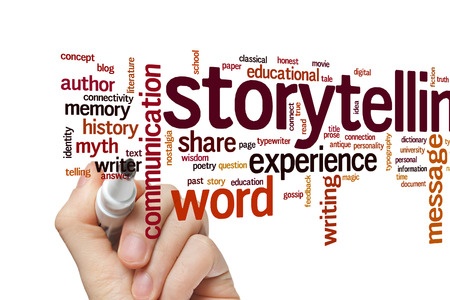
10 Jul The How, Where and Why of Nonprofit Storytelling
Over the past few years, brand development has been experiencing a fundamental shift toward a more personal, connective state in business – and becoming more “humanized.” In business, brands and branding techniques are changing to become a more active part of the conversation with customers, creating more immersive and interactive experiences. One of the best ways to achieve this emotional connection with customers is by telling the brand story, or storytelling.
People love stories, especially the ones where they can identify with. This connection forges an emotional bond between the brand and the customer, aligning them with the emotional core of the brand. A mix of visual and content storytelling inspires emotions and increases trust, which leads to more brand value. Every brand has a story and that story needs to speak to the customer. Most can relate to a common issue or problem that requires a definitive solution… so share how the brand has overcome these obstacles with a solution… and how the brand can provide the best solution to its customers’ issues as well.
When it comes to nonprofit organizations, storytelling is one of the most important parts of communication and fundraising. A well-crafted story can give supporters insight into the daily operations of a nonprofit, highlight the history of the organization, or outline the need for its services – all to connect with supporters and encourage them into action.
How?
Storytelling can be achieved through testimonials, mission statements, event summaries, or even an actual story that details a character who experiences a change or transformation – which tends to be the most powerful. The character, the protagonist, needs to be a real person – someone the audience can connect or empathize with – and should have a problem or need that your organization can help provide a solution for. There is an obstacle in the character’s way that serves as the antagonist of the story, and your organization needs to describe how and why the audience is crucial to the success of the character overcoming the obstacle. This makes the audience a part of the story, compelling them to assist the character, thus creating a bond between the audience and the organization.
Where?
One of the most prominent storytelling tools used by nonprofits today is their website. The most successful nonprofit websites are a combination of great website structure, design, content, and functionality. According to researchers from the Joint Initiative of Georgetown University Center for Social Impact Communication and the Meyer Foundation:
- 33% of nonprofits have at least one story on their homepage;
- 21% have a separate page for their stories; and
- 15% integrate their stories into program-specific pages.
Nonprofit stories on websites can be delivered via text, video, photos, illustrations, audio, or a combination of media. People are most stimulated through imagery and video as it’s easier to remember than text, so incorporating visuals into your story is imperative. Choose imagery that aids in telling the story, reflecting on the mission and goals of the organization.
Why?
Storytelling for nonprofits is intended to connect with supporters and inspire them to act. Whether it is one or a combination of three main nonprofit goals – fundraising, awareness, or advocacy – creating call-to-actions to donate, volunteer, contact or share content in conjunction with the story will guide supporters to follow through.
Following these guidelines – by creating compelling stories on a professionally-designed website with clear call-to-actions – will enhance your organization’s impact and strengthen its brand.



Sorry, the comment form is closed at this time.